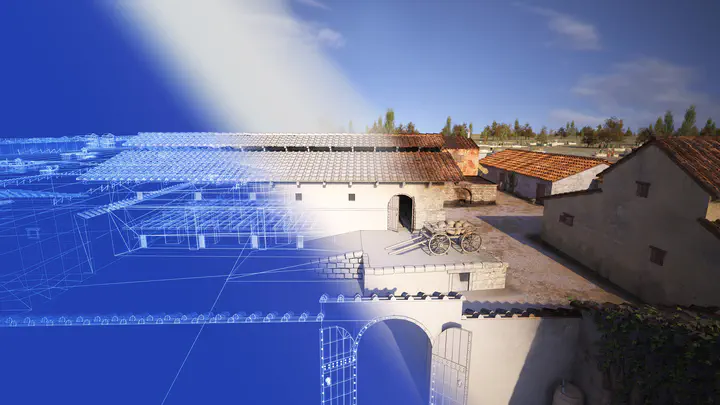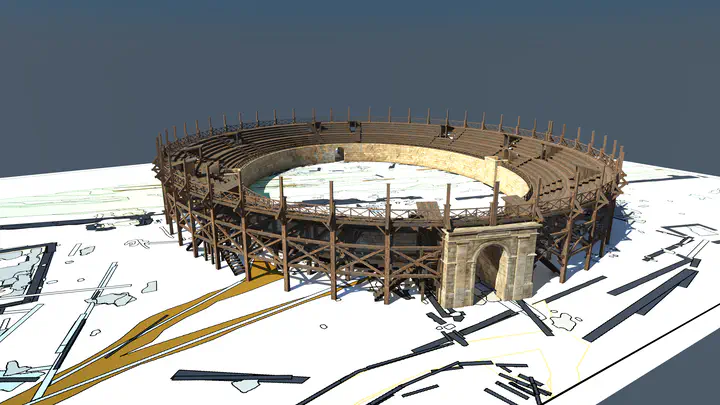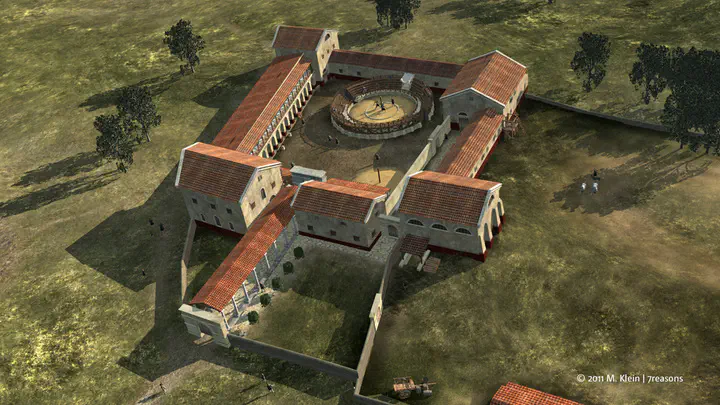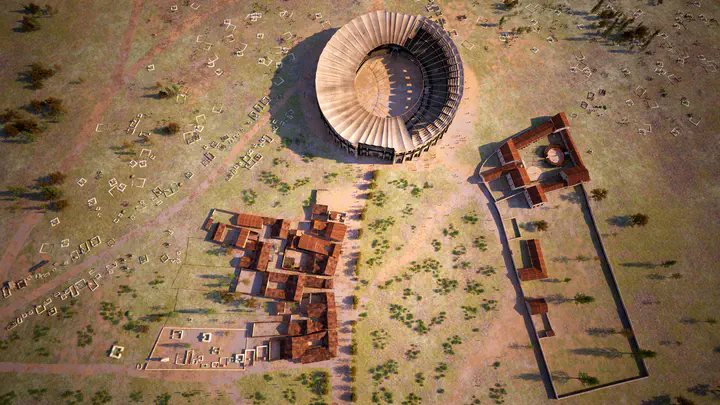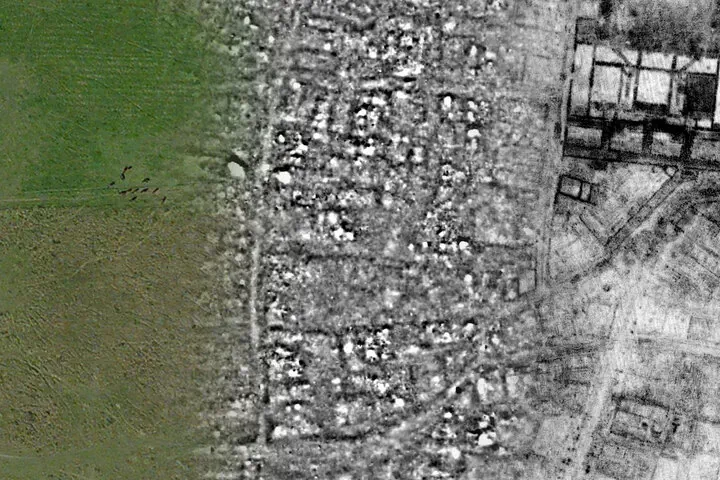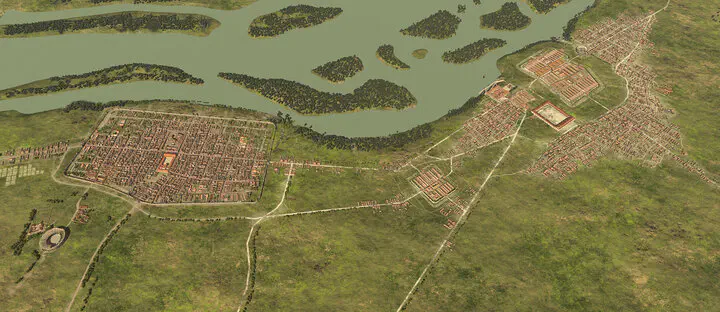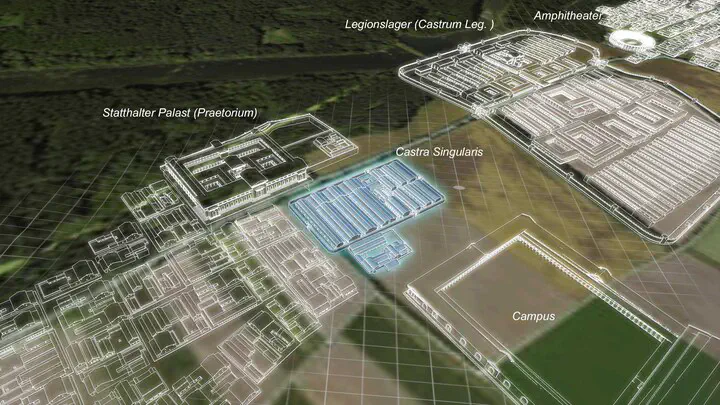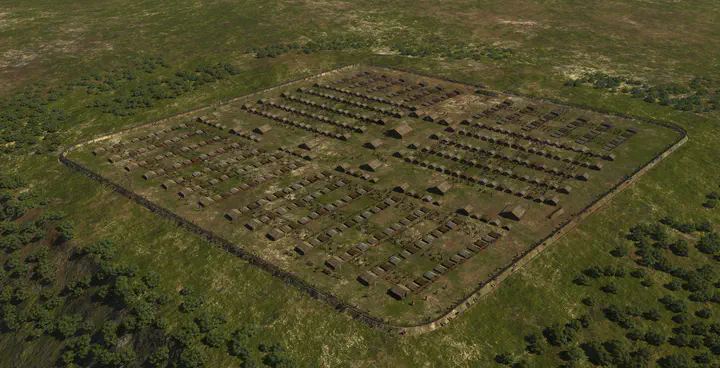Carnuntum
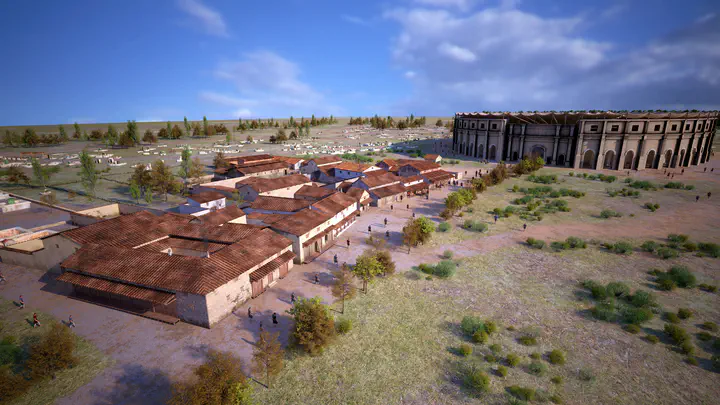
Carnuntum
Carnuntum is among the largest archaeological landscape in Central Europe with the Roman town covering more than ten square kilometres of area in antiquity. Carnuntum had a prominent position along the Danube Limes. Between the 1st and 4th century AD Carnuntum grew into a city of about 50,000 inhabitants and became the capital of the Roman province of Pannonia Superior with a flourishing civilian city (municipium aelium karnuntum) outside the military quarters. Nowadays, almost the entire Roman town is still preserved under fields and vineyards some 40 km to the east of Austria’s capital Vienna.
Between 2012 and 2015 the Ludwig Boltzmann Institute for Archaeological Prospection and Virtual Archaeology (LBI ArchPro) together with ZAMG and their international partners have been exploring the subsurface of this vast area in a large-scale prospection project on behalf of the County of Lower Austria. Using custom made, high-resolution magnetometers and ground-penetrating radar systems, the researchers explored and visualized about 10km2 of Carnuntum’s core area.
The result of the research project was a comprehensive and detailed digital map of the archaeological landscape of Carnuntum including the civilian and military town. Among the highlights of the discovered structures was the school for gladiators (ludus) just outside the gates of the civilian town - a building which is almost unique in the Roman Empire for its size and completeness. Next to the ludus and the amphitheater the surveys revealed an entire settlement area holding the necessary infrastructure for the Roman spectacles such as taverns, cook shops and a bakery. Hidden under the later city wall, the GPR data showed remains of a wooden amphitheater located at an intersection of a road that followed the Roman frontier (Danube Limes) and the main road leading back to Rome; a temple for the Quadriviae (Roman goddesses of the cross-roads) was located right next to the building. Outside the western gate of the Roman town the surveys have revealed one of the earliest military camps constructed during the Roman occupation of the Carnuntum area. Another area of interest was found in the military town where the garrison of the governor’s guard – the castra singularium - was detected forming a part of a huge building complex which was the administrative center of the Roman province.
„The province of Lower Austria has taken many measures in Carnuntum, especially in the last ten years, to protect and preserve the few excavated areas for future generations and to present them in an appropriate manner. In addition to such measures, however, detailed research of the archaeological heritage still in the ground is particularly necessary. Unlike in the past, it is no longer necessary to excavate everything; instead, information about ancient life and the city’s appearance nearly 2,000 years ago can be obtained in incredible detail using non-invasive methods such as magnetic field measurements or ground-penetrating radar and used for virtual reconstructions. Sensational and unexpected discoveries have been made during the course of the project, but many more lie hidden and waiting to be discovered in the largest Roman archaeological landscape in Central Europe.“
Prof. Wolfgang Neubauer (director, LBI ArchPro)
Selected publications
The outstanding results of the research project have received worldwide attention from both the public and the scientific community.
-
Neubauer, Wolfgang; Gugl, Christian; Scholz, Markus; Verhoeven, Geert Julien Joanna; Trinks, Immo; Löcker, Klaus et al. (2014): The discovery of the school of gladiators at Carnuntum, Austria. In: Antiquity (88), S. 173–190. DOI: 10.3997/1873-0604.2014014.
-
Gugl, Christian; Wallner, Mario; Hinterleitner, Alois; Neubauer, Wolfgang (2021): The Seat of the Roman Governor at Carnuntum (Pannonia Superior). In: Heritage 4 (4), S. 3009–3031. DOI: 10.3390/heritage4040168.
-
Neubauer, Wolfgang; Wallner, Mario; Gugl, Christian; Löcker, Klaus; Vonkilch, Alexandra; Trausmuth, Tanja et al. (2018): Zerstörungsfreie archäologische Prospektion des römischen Carnuntum – erste Ergebnisse des Forschungsprojekts „ArchPro Carnuntum“. In: Carnuntum Jahrbuch 2017, S. 55–75. DOI: 10.1553/cjb_2017s55.
-
Wallner, Mario; Gugl, Christian; Radbauer, Silvia; Neubauer, Wolfgang (2021): The Western Suburbium in Roman Carnuntum. 14th International Conference of Archaeological Prospection 2021. In: archeosciences 45 (1), S. 139–141. DOI: 10.4000/archeosciences.9119.
Images
Links
- Project Website: https://lbi-archpro.org/cs/carnuntum/
